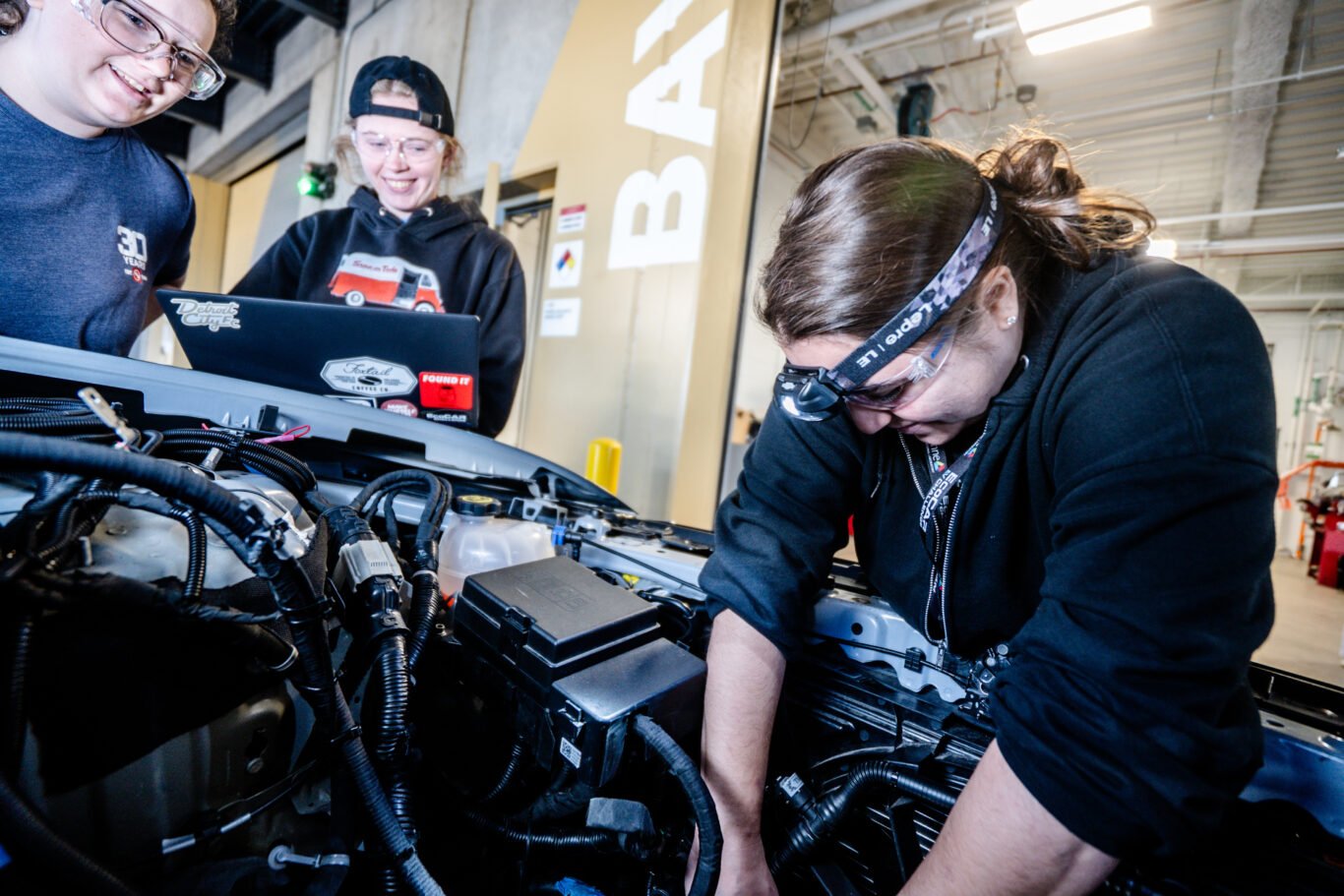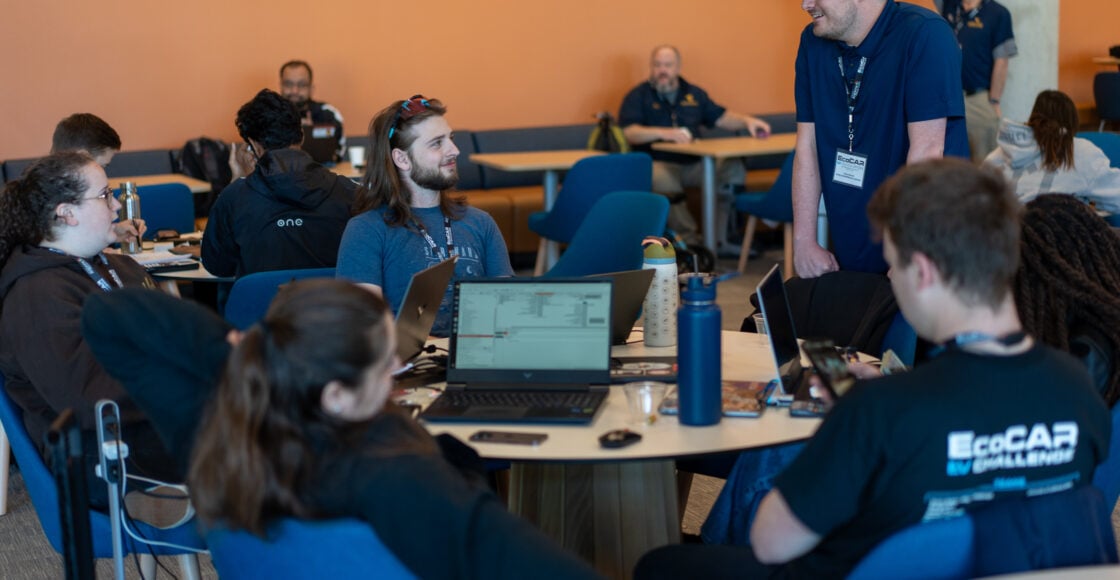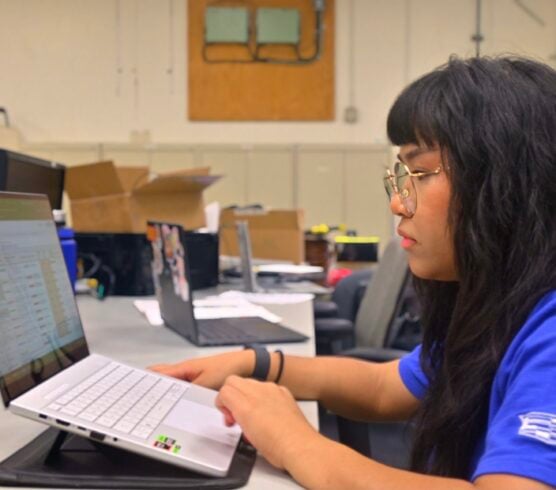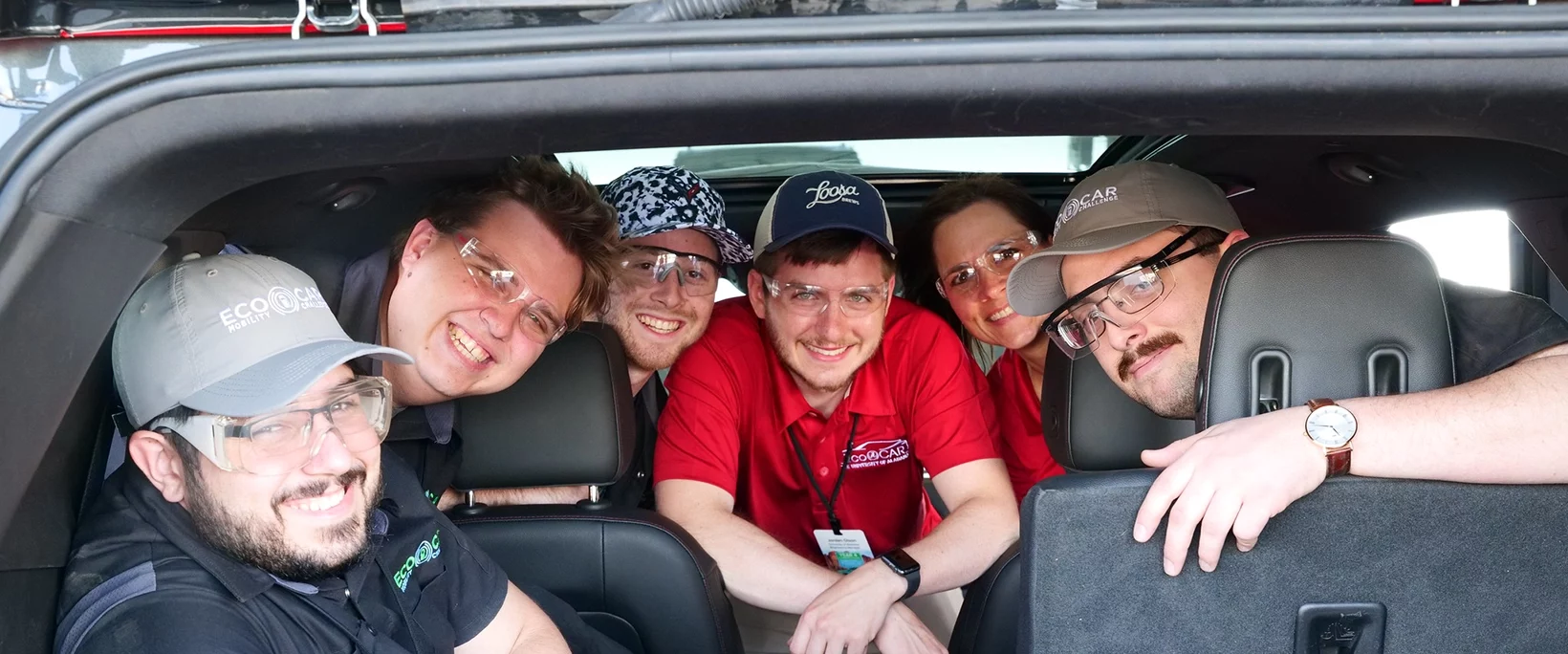Written by: Skye Myers and Buchizya Mwase
The EcoCAR EV Challenge is a multidisciplinary program where students from a wide range of backgrounds collaborate to advance the automotive industry and build the future workforce through hands-on experience. All of the technical and non-technical sub teams of an EcoCAR team come together to ensure the vehicle performs at its best, whether at a competition, a track testing day, or even at community outreach. The Embry-Riddle/Bethune-Cookman EcoCAR team consists of six subteams: Project Management, Communications, Mobility Challenge, Systems Design Integration (SDI), Propulsion Controls and Modeling (PCM), and Connected and Automated Vehicles (CAVs).
The Project Management team serves as the primary point of contact between the EcoCAR team and competition organizers, sponsors, and faculty advisors. This subteam communicates closely with all other subteams to ensure that everyone meets deadlines and stays informed about competition updates and milestones. Acting as both a guiding force and a strong support system, the Project Management team helps keep the entire program organized, motivated, and on track.

The Communications team plays a vital role in connecting the EcoCAR team’s technical work with the broader community. They work closely with subteam leads and the Project Management team to complete deliverables and organize events throughout the year. Major events such as the Fall and Spring Spotlight Showcases bring together every member of the team’s leadership. Through direct coordination between the Project Manager, Communications Manager, and Lead Faculty Advisor, each showcase is carefully planned in alignment with the deliverables calendar. In addition to event planning, the Communications team manages social media platforms, creates outreach campaigns, and highlights the team’s accomplishments to engage sponsors, students, and the public. None of these efforts would be possible without the collaboration of the technical subteams, whose hard work enables both static and dynamic vehicle demonstrations to take place successfully.
The Mobility Challenge subteam serves as the team’s connection to its Community-Based Organization (CBO). This subteam plays a vital role in maintaining ongoing communication with the target community group. Their work combines both technical and outreach components, requiring collaboration with the Systems Design and Integration (SDI) and Propulsion Controls and Modeling (PCM) subteams, as well as the CBO itself, to ensure that project goals align with community needs and technical objectives.

The SDI (Systems Design and Integration) team is the wrench to the team’s nuts and bolts. This subteam is the reason the car moves, managing the motors, axles, and all other hardware components. They are also responsible for ensuring the vehicle’s systems work properly by installing and integrating essential sensors, LiDAR, and camera equipment. Without the SDI team, there would be no way to ensure the car is safe to operate. During Year 4, the SDI team is focused on completing the integration of hardware components, including parts from the CAVs and PCM subteams. For our team, this includes integrating the AAM EcoTrac differential and the LiDAR system, both critical to the vehicle’s overall functionality and safety.
The PCM (Propulsion Controls and Modeling) team is responsible for the code that powers the vehicle. They program and instruct the car through a Simulink model running on the Speedgoat system from MathWorks. One of the team’s biggest tasks is the calibration and optimization of this code, an essential process to ensure the Cadillac LYRIQ operates comfortably and drives smoothly. PCM’s focus for Year 4 is improving driveability of the LYRIQ through cross-team calibration and implementing One Pedal Drive functionality to the control architecture.
The CAV (Connected and Automated Vehicles) team develops the on-vehicle autonomy features, turning SDI’s sensor inputs into motion targets for PCM. Additionally, the CAV subteam is responsible for creating algorithms for (ACC) Adaptive Cruise Control, (AIN) Automated Intersection Navigation, and (LCC) Lane Centering Control. Year 4 focus is productionizing the algorithm developed during the EV Challenge, fusing with SDI and PCM’s calibrations to ensure a robust and safe autonomous vehicle system.
Together, these six subteams demonstrate how collaboration, communication, and technical expertise come together to make the EcoCAR team successful. Each group plays a critical role, but it is their ability to work across disciplines, sharing knowledge, supporting one another, and aligning on goals that ensures the Cadillac LYRIQ performs at its best on the track, in the community, and beyond. Year 4 highlights not only the complexity of building a connected vehicle but also the teamwork, problem-solving, and innovation that prepare these students to become the next generation of leaders in the automotive industry. Through this coordinated effort, the EcoCAR program continues to drive both student development and the future of mobility.




